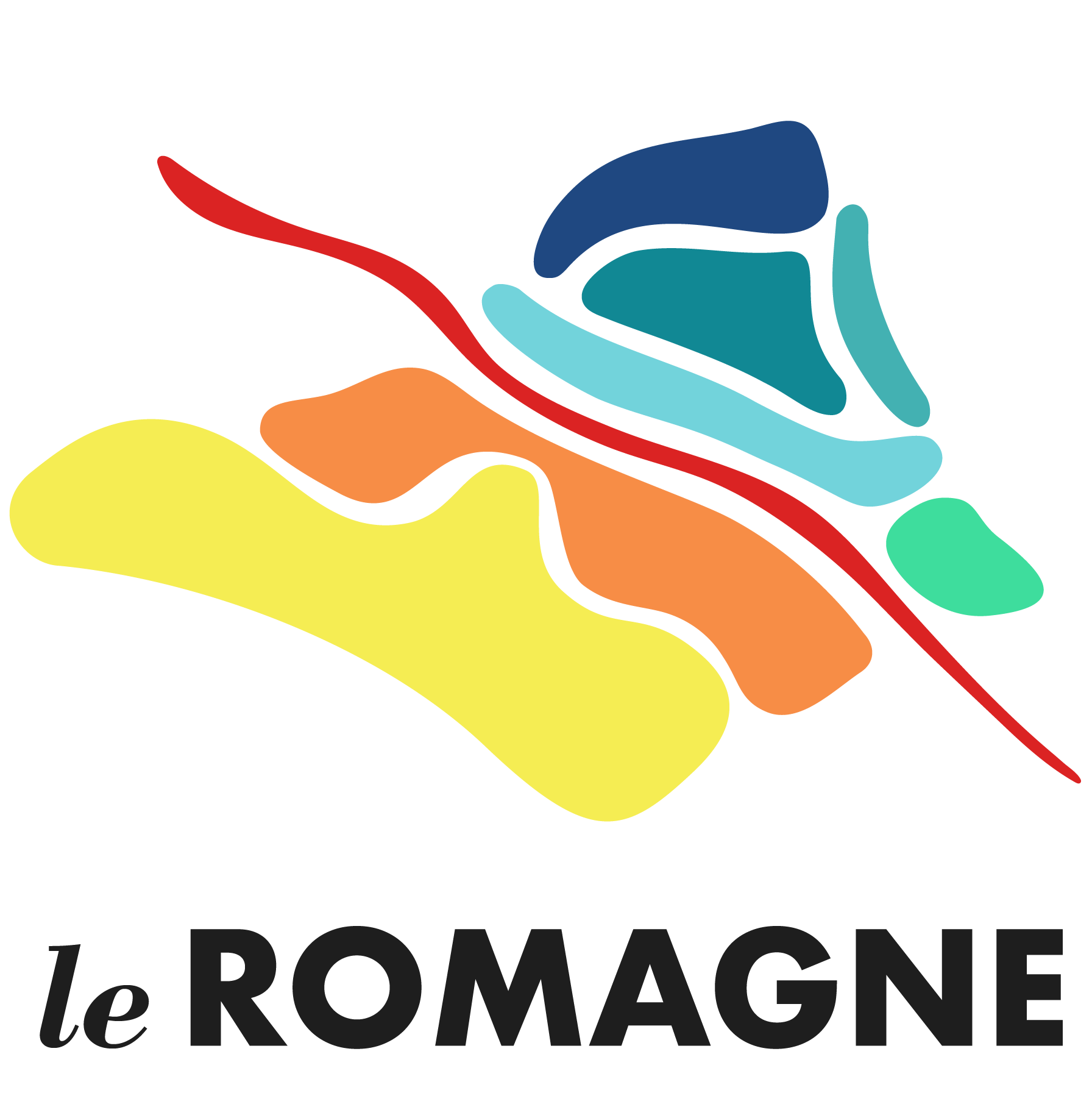Home en
Le Romagne: Lands to be discovered
This online guide illustrates what one "does not see" and offers key points in reading for "the discovery of knowledge and typology" of this territory.
The plural Le Romagne highlights the reasons, discussions and emotions that identify and are associated with the very spirit that each place has to offer. From the Tuscan Apennines where the Arno and the Tiber rivers begin to flow, to the Adriatic Coast to the Rhine, the details of history are summarized in the Home Page and are divided into individual sections, each offering valuable insights. The different geographical areas are presented with regard to their structure, by stone and brick; from the simplest forms of rural houses to the more complex in the towns in their relationship with the geographic environment, represented in the cultural fabric of each individual road.
The Romagna region presents itself differently to those coming from the mountains and those coming from the valley.
From the ridge of the Apennines the view is of a bed of hills that are intertwined with each other. The key that enables us to distinguish this territory is the distinct 50 km chain-like valley that stretches across the headlands to Via Emilia. The hills are rather narrow and they would appear similar to the careless eye. They cross each other with rhythmic spacing, going up and all the way down to the foothills. Half way between the valley (about 25 km from Via Emilia) begins the most important path that connects Marzabotto in Bologna to Verrucchio in Rimini. For a large stretch, this path in the central valley, confines the political-administrative border of Romagna-Toscana to the Romagna Pontificia.
From the Adriatic coast, however, the flatland is limited to the north by the Rhine River which is due to the fruits of labour of a man, whom, from its foundation to present day, had to deal with water regulation of the turbulent Apennine Rivers. The common thread to follow is that of the rows of dry land between the marshes that connected the port of Spina to the Etruscan inland. This thread is to be found in the large mesh of Roman planning, and reclamation, for more circumscribed territories, which from the Renaissance to today have built dams and diverted the course of rivers. This construction of the plain has been an ongoing work considering that six rivers flow around Ravenna.
This territory contains its historical past and preserves its differences. This guide provides the key to its discovery by highlighting the framework as a mosaic, a puzzle, so that anyone can channel an inner curiosity and assemble the individual pieces one prefers by grasping the essence of the larger picture.
Another element that is emphasized in this guide is not the architectural or natural necessity that can be found through specialized links, but that of rural houses, roads, bridges and small nuclei that have the ability to personify the identity of diverse places, locking in the memory and knowledge of typical characteristics.
The features that characterize the different Romagne are particular, suptle, made of fine lines that this guide helps to grasp. Descriptions and images of what there is have been available for some time but share general information.
The material that is made public in this guide consists of drawings, photos and documents that reconstruct the stages of growth and development through which historical events materialize and have left their mark. The available reading highlights typological matrices of the territorial and anthropogenic structure, especially:
Viability analyzes the different roads in their relationship with the geographic structure. The types of ridge paths, against ridge and valley floor, are a useful source for an alternative use of the land; that is, it allows the tourist to approach the land "from within" in order to "understand" as well as "see".
The historical centers are the pinnacle for reference. The reading focuses on their origins and their location, "because they are there." The different stages of growth are addressed with ease and are made for easy understanding, even for non-professionals or technicians.
Rural homes, along with villas, buildings, watchtowers are definitely one of the elements that most characterizes our lands. The research carried out highlights the original matrices, stages of growth, typologies and the link with the environment through the difference in the use of brick and stone.


